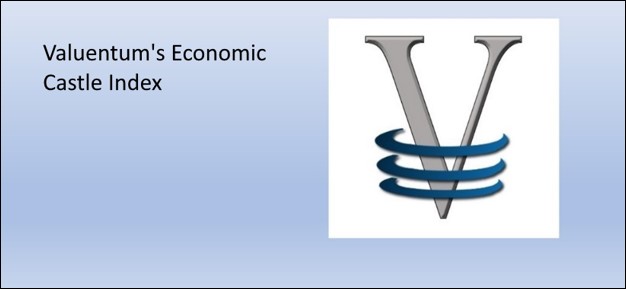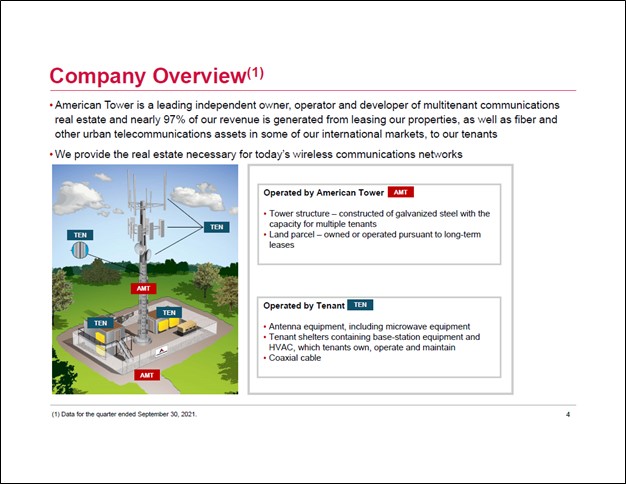|
|
Recent Articles
-
 Update: Analyzing Valuentum’s Economic Castle Index: A Walk Forward Case Study
Update: Analyzing Valuentum’s Economic Castle Index: A Walk Forward Case Study
Feb 25, 2022
-

There are two things generally wrong with a pure economic moat assessment, or economic “moat factor.” First, it is much easier to assess outsize economic returns in the near-term than it is to assess outsize economic returns over the long haul. Quite simply, nobody can predict what will happen tomorrow, and they certainly don’t know what will happen 20 or 30 years from now. Second, a rational investor should generally prefer expected near-term outsize economic returns than expected long-term ones given the uncertainty of the latter--somewhat related to our first point, a bird in the hand (or large economic returns in the near term) is worth two in the bush (or large economic returns in the long run that may not materialize). The time value of money reinforces this notion. Near-term economic returns are generally worth more than long-term ones in real terms, even if they may be smaller nominally. This is where our Economic Castle rating comes in. The goal of the Economic Castle rating is to identify those companies that are likely to generate a lot (or not so much) shareholder value over the foreseeable future. Instead of pondering a guess as to how the landscape will look 20 or 30 years from now, something not even the Oracle of Omaha can do with any sort of certainty (e.g. IBM, KHC), the Economic Castle rating ranks companies based on near-term expected economic returns, or returns that are more likely to be realized as opposed to those that may be built on “castles in the air” over 20-30 time horizons. By evaluating companies on the basis of the spread between their forecasted future return on invested capital (‘ROIC’) excluding goodwill less their estimated weighted-average cost of capital (‘WACC’), we measure a company’s ability to generate an “economic profit” over the foreseeable future, which we define as the next five fiscal years. Companies that generate a forecasted spread of 50 percentage points or more are given a “Very Attractive” Economic Castle rating and firms that are forecasted to generate a spread of 150 percentage points or higher are considered “Highest-Rated”. Firms that carry an Unattractive Economic Castle rating are those that are forecasted to generate a forward ROIC (ex-goodwill) less estimated WACC spread that’s meaningfully below zero (firms near economic parity can receive a Neutral Economic Castle rating, assigned by the Valuentum team).
-
 Dividend Increases/Decreases for the Week February 25
Dividend Increases/Decreases for the Week February 25
Feb 25, 2022
-
Let's take a look at companies that raised/lowered their dividend this week.
-
 High-Yielding American Tower Is a Free Cash Flow Cow
High-Yielding American Tower Is a Free Cash Flow Cow
Feb 23, 2022
-

Image Shown: American Tower Corporation operates the tower structure and related land parcel of cell tower assets, while its tenants handle the remainder. Image Source: American Tower Corporation – Third Quarter of 2021 IR Earnings Presentation.
Rising geopolitical tensions, inflationary headwinds, supply chain hurdles, and pressures from the rising interest rate environment are all weighing negatively on equity markets. In our view, this sell-off presents an opportunity for investors with a longer-term focus to consider high-quality REITs such as American Tower Corp, which is now trading at a significant discount to our estimate of its intrinsic value.
-
 High-Yielding Life Storage Has Tremendous Dividend Strength
High-Yielding Life Storage Has Tremendous Dividend Strength
Feb 23, 2022
-

Image Shown: Life Storage Inc is committed to rewarding income seeking investors. Image Source: Life Storage Inc – January 2022 IR Presentation.
We are huge fans of Life Storage and the self-storage industry. Life Storage owns 1,000+ self-storage properties across 30+ states and has received an investment grade credit rating (Baa2/BBB) from two of the ‘Big Three’ rating agencies. The REIT also operates a third-party management platform for self-storage properties. The company’s financials are rock-solid and recent guidance increases speak favorably towards its near term outlook. Shares yield a solid ~3.1% at the time of this writing.
|